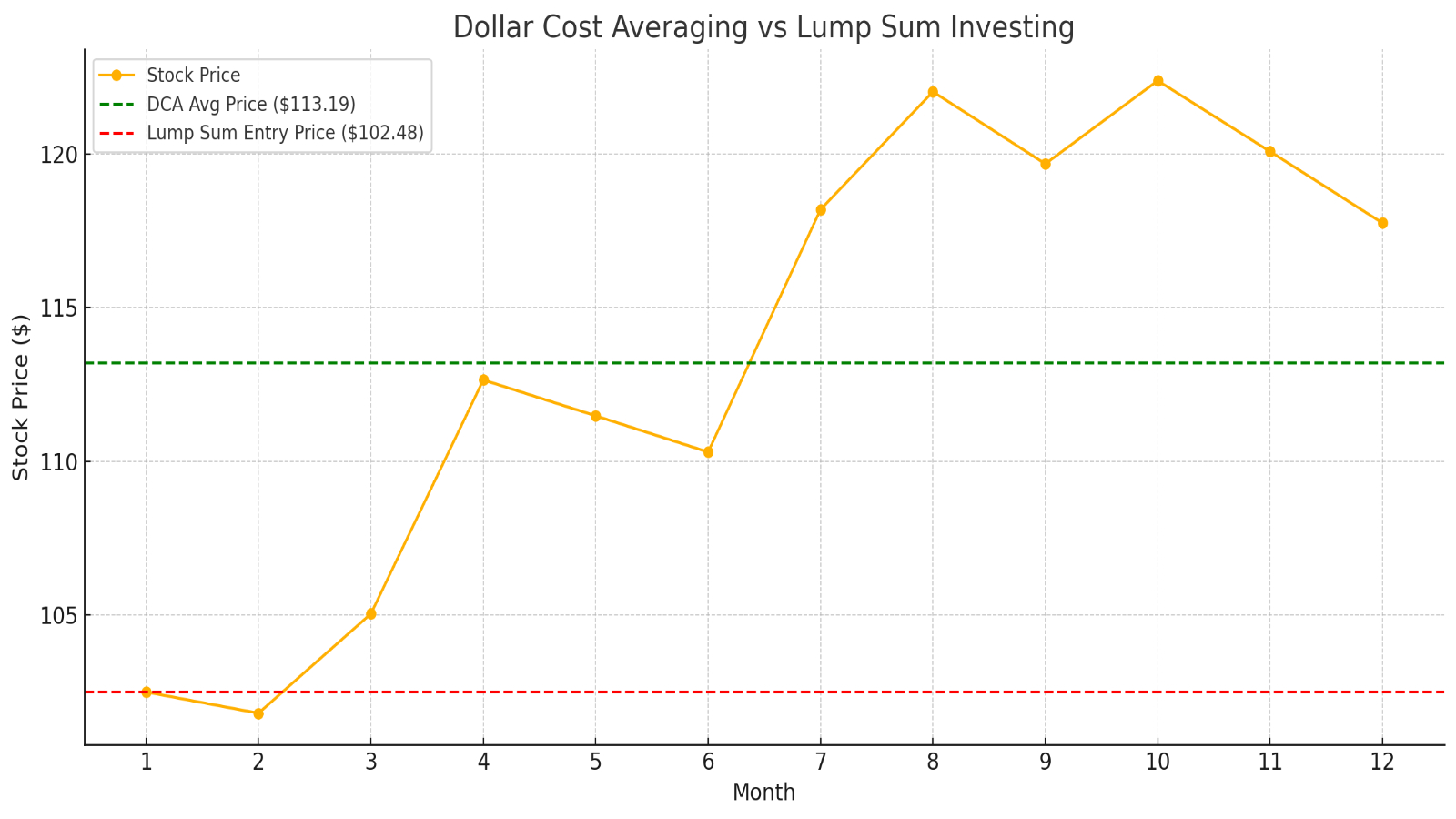
Dollar-cost averaging (DCA) is one of the most important concepts an individual investor can master.
Fortunately, it's also one of the easiest.
The idea of dollar-cost averaging is to invest your dollars in a stock, exchange-traded fund (ETF) or other security in regular, equal portions over time.
Sure, you could invest your cash in a single lump sum, but how do you know you're getting the best price? (Remember: The idea is to buy low.)
In the short term, many stock movements can be random, and even the pros are more likely to fail than succeed when trying to precisely time the market.
Dollar-cost averaging doesn't guarantee you the lowest cost basis on your investments. It can, however, produce a lower average cost basis over a longer period of time than lump-sum investing.
And, again, it's easy to do.

How dollar-cost averaging works
If you have a 401(k) or similar plan where you automatically invest a percentage of every paycheck in a retirement plan, guess what? You are already dollar-cost averaging.
That's because every pay period, you're investing the same amount of cash like clockwork.
But say you want to do this in an IRA or brokerage account. Here's an example of how this would work with an individual stock.
You have $10,000 to invest in, say, grocery chain Kroger (KR). You effectively have two options:
1.) Make a lump-sum investment of $10,000. If shares in the supermarket chain decline soon after you make your investment, however, you might kick yourself over your poor timing.
2.) Dollar-cost average, investing the $10,000 gradually and at regular intervals. For instance, you might purchase $833.33 worth of KR stock every month for 12 months.
The beauty of dollar-cost averaging is that if Kroger stock does indeed decline over that period of time, you'll buy KR shares at a lower cost. Thus, you'll get more shares for your $833.33, too.
Here's how dollar-cost averaging with KR would've looked across 2019, assuming you had bought at the closing price of each month:
In short, DCA lets an investor automatically buy more shares in a company when they're cheaper, and fewer shares when they're more expensive.
Nothing's a guarantee, of course
As with everything in investing, DCA is not without its detractors. Dollar-cost averaging can underperform lump-sum investing at times.
But while systematic investing does not guarantee a profit or protect against loss, it can lift a psychological brick or two off your shoulders.
With DCA, you don't need to agonize over whether you should buy right now, or wait for earnings, or wait for a market dip. You just implement the system and keep yourself updated on the stock over time.
Investors also need to consider whether they have the stomach to keep buying when share prices are falling or the stock market is selling off.
Dollar-cost averaging doesn't mean to throw good money after bad if the company's narrative has changed considerably. But it does mean being consistent through short-term ups and downs.
That said, DCA can be a good strategy for long-term investors who just want to set it and forget it.







